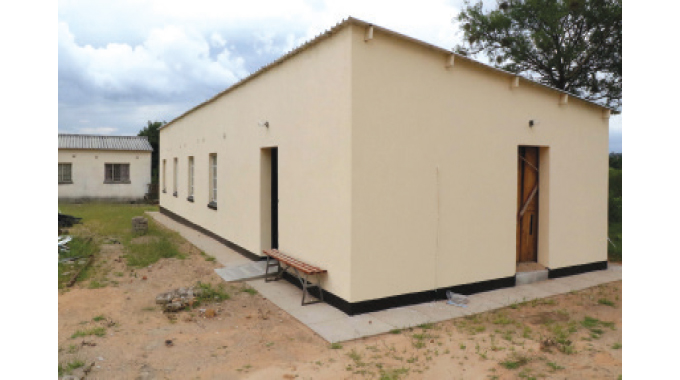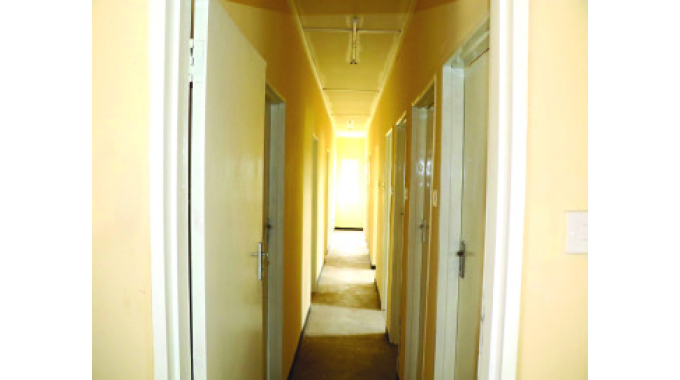Maternity waiting home to ease pressure on expectant women in Garanyemba

Yoliswa Dube-Moyo, Mat South Bureau Chief
THE pain of losing her first baby that she had to deliver in a scotch cart along a bumpy road to the clinic in 2014 still has not left her.
Eight years on, she still blames herself for her son’s death and questions why her baby had to die or what could’ve been done differently to save the baby’s life.
Ms Susan Ncube (32) from Garanyemba in Gwanda District, Matabeleland South Province said her first baby was prematurely born, developed complications and died a few days after birth.
Her relatives told her not to grieve her son’s death as she would fail to have more children. So she bottled up her feelings and moved on with life.
“I didn’t know any better. I was young, it was my first child and there’s a lot I didn’t know about. The outcome could’ve been different had I sought antenatal care more often,” said Ms Ncube.
She said she was devastated by her son’s death and vowed to have her next pregnancy closely monitored.
Due to her pregnancy-induced hypertension, nurses recommended that she stays at the clinic a few weeks before her due date, which significantly improved the outcome with her second baby who is now a thriving toddler.
Now expecting her third child, Ms Ncube looks forward to living at the newly-built maternity waiting home at Garanyemba Clinic.
“With my second baby, I was admitted at the clinic so that nurses could monitor the last stages of my pregnancy. My blood pressure would get very high towards the end of the pregnancy but I didn’t worry much because I was staying at the clinic.
I’m very excited that a mother’s shelter has been built here so we have a bit of privacy compared to the ward set up,” said Ms Ncube.
The women are currently using space at the clinic and once there’s water at the waiting home, they’ll move there.
The maternity waiting home at Garanyemba Clinic, which was built by the Gwanda Rural District Council using devolution funds is expected to lighten the load for expectant mothers in the area.
They will not have to live at the main clinic structure with other patients but have their own private space where they can develop a sense of community and psychosocial support among themselves.
The mother’s shelter comprises of six separate rooms, showers, toilets, sinks and a common room where a stove will be installed to allow the expectant mothers to cook their own meals.
Maternity waiting shelters where expectant mothers can stay during their last six weeks of pregnancy have become critical in saving lives in rural Zimbabwe.
Matabeleland South Maternal and Child Health Officer Dr Norbert Singine said it was important that women continue to use health centres for the safety of both the mother and baby while the province continues to roll out health education programmes to empower communities with knowledge.
“Health education and promotion remain key in addressing some of these challenges that we face as a province in that it empowers the community to make correct decisions regarding the health welfare of pregnant women and their unborn babies.
There’s a concept of “Pre-conceptual care” which we routinely provide to all mothers and fathers in the Family and Child Health departments of our hospitals. This covers a lot on planning for pregnancy, birth-preparedness (including the role of waiting mother’s shelter for proper monitoring prior to delivery) and delivery itself,” said Dr Singine.
He encouraged women to continue utilising the services of waiting homes as these were meant to ensure that in their vulnerable state, they were close to health practitioners and could be closely monitored.
“Moreover, the women in waiting shelters are a high-risk group that need close monitoring and management of possible pregnancy-related complications (who will not get timely interventions if they are far away from the hospitals),” he said.
In the latest Multiple Indicator Cluster Surveys (MICS) 2019 report, Zimbabwe recorded a decline in maternal mortality from 614 to 462 deaths per 100 000 pregnancies since 2014.
This significant drop is in part attributed to mothers’ shelters such as this one located at Garanyemba Clinic and other health institutions in the province and across the country.
The shelters dramatically cut the long distances that women must travel to access quality obstetric care.
Preference is given to those pregnant with their first baby, those delivering through Caesarean section, those with high blood pressure and or those having their fifth child.
A shelter close to medical experts equally prevents haemorrhages, which the MICS 2019 reported to have caused 26 percent of maternal deaths in 2019.
Gwanda Rural District Council acting chief executive officer Mr Nkosilathi Ncube said the maternity waiting home at Garanyemba Clinic would be opened as soon as running water had been installed.
“Everything is now in place except the plumbing. Water is a great challenge in this part of the country. We have since drilled a borehole but the water pressure is very low and it takes a very long time to fill up the Jojo tank.
We’re working hard to ensure that our mothers can access the shelter soon,” said Mr Ncube.
Using mothers’ shelters, Zimbabwe continues to work towards the global target of reducing the maternal mortality ratio to less than 70 per 100 000 pregnancies by 2030.

Inside the maternity waiting home
As a result of the waiting homes, the number of pregnant women receiving prenatal care is now about 70 percent, up from 57 percent, while mothers accessing care after giving birth has nearly tripled to 78 percent.
According to the Ministry of Health and Child Care, the number of expecting mothers giving birth at home has decreased and it hopes high maternal mortality decreases too.
EU health advisor Dr Paolo Barduagni explained the importance of the facilities.
“To prevent labour happening far away from a clinic and we do not have time to reach the health service. The issue is to monitor the pregnancy during the last weeks and to prevent what can be prevented in terms of complications during the delivery.
And the social communication; there is a passage of information, experiences, attitudes by women in the same condition; these socially have great importance,” said Dr Barduagni.
The Multiple Indicator Cluster survey of 2019 says 92 percent of women in rural areas receive antenatal care while in urban areas the figure stands at 96 percent.
Nationally, in rural areas, 73 percent of the women visit health centres at least four times while in urban areas, the number stands at 68 percent.
Institutional delivery in urban areas constitutes 94 percent for both institutional delivery and accessibility of skilled attendance at birth. In rural areas, the figure stands at 82 percent.
In terms of postnatal care, maternal check within two days after delivery stands at 91 percent in urban areas while in rural areas the figure stands at 78 percent.
Statistics of the newborn check within two days stands at 94 percent in urban areas and 90 percent in rural areas. — @Yolisswa









Comments